When is the Best Time to Prune Pine Trees
- February 13, 2024
- 0 comment
Unsure when to prune your pine tree? Avoid stunting growth & inviting pests! Discover the ideal season & expert tips for a healthy, beautiful tree. Keeping your pine tree healthy and looking its best requires proper pruning. But when is the magic timing? Pruning at the wrong time can stress the tree, hinder growth, and even attract unwanted pests.
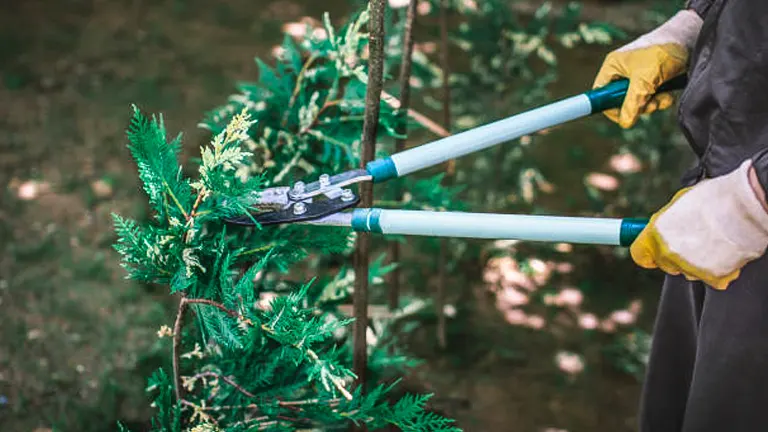
Fear not, pine-lovers! This guide unveils the ideal season for pruning and equips you with expert tips to ensure your tree thrives. So, grab your pruning shears and get ready to transform your pine into a majestic masterpiece!
Table of Contents
- Understanding Pine Trees
- The Importance of Timing in Pruning
- Best Time for Pruning Pine Trees
- How to Prune Pine Trees
- Aftercare Following Pruning
- Conclusion
- FAQs
Understanding Pine Trees

Pine trees are known for their evergreen beauty and hardy nature, making them a favorite in landscapes across various climates. They belong to a family of trees that thrive in a wide range of environments, but they share common characteristics that influence how and when they should be pruned. Most pine trees exhibit a strong central leader (the main upward-growing branch) and have a growth habit that can be either open and spreading or more compact and vertical. Understanding these growth habits is key to effective pruning, as it helps maintain the tree’s natural shape and health.
Diversity and Adaptability
The pine family encompasses over 120 species, each adapted to specific environments ranging from the cold northern latitudes to the warm temperate zones. This diversity means that there’s a pine tree suitable for almost every landscape need, from towering specimens like the Eastern White Pine (Pinus strobus), which can reach heights of over 150 feet, to the more diminutive Mugo Pine (Pinus mugo), which maintains a compact form ideal for smaller gardens.
Growth Habits and Characteristics
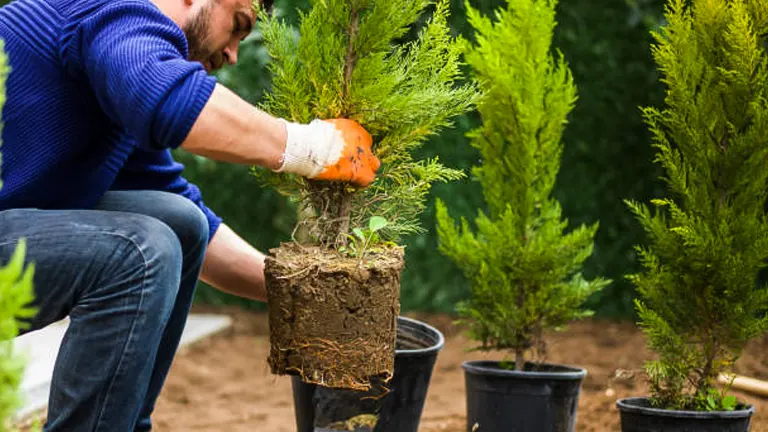
Pine trees are largely characterized by their growth pattern, typically featuring a strong central leader that directs the tree’s upward growth. This central leader is crucial for the tree’s vertical development, especially in its early years. The branching pattern of pine trees can vary significantly between species, with some displaying a dense, compact growth habit, while others adopt a more open and spreading form. The shape and density of a pine tree are influenced by its genetic makeup as well as environmental factors, including light availability, soil type, and moisture levels.
Foliage and Reproduction
Pine needles, the leaves of pine trees, are another distinctive feature. These needles are bundled in fascicles of two, three, or five, depending on the species, and can vary in color from deep green to bluish-green or even golden in some varieties. The needles play a vital role in photosynthesis while also reducing water loss, thanks to their waxy coating. Pine trees are gymnosperms, meaning they reproduce through the production of cones rather than flowers. The male cones release pollen, which fertilizes the female cones, leading to the development of pine seeds.
Pruning Considerations Based on Growth and Health
Understanding the specific growth habits and biological needs of pine trees is essential for effective pruning. Pruning should respect the natural form of the tree, focusing on maintaining a healthy, strong structure rather than altering its inherent shape. Key considerations include:
- Timing: As previously mentioned, the best time for pruning is during the late winter to early spring, minimizing stress and sap loss.
- Selective Pruning: Targeting dead, diseased, or competing branches for removal helps preserve the tree’s energy for healthy growth and maintains its natural form.
- Growth Response: Pine trees respond to pruning by redirecting growth to undeveloped buds. Knowing where and how to make cuts can influence the tree’s future shape and density.
Comparative Characteristics of Selected Pine Species
| Species | Average Height (ft) | Lifespan (years) | Needle Lifespan (years) | Growth Rate | USDA Hardiness Zone |
|---|---|---|---|---|---|
| Pinus strobus (Eastern White Pine) | 50-80 (up to 150) | 200-450 | 2-3 | Fast | 3-8 |
| Pinus palustris (Longleaf Pine) | 60-100 | 300-500 | 2-3 | Slow | 7-10 |
| Pinus ponderosa (Ponderosa Pine) | 60-200 | 300-600 | 2-9 | Moderate | 3-7 |
| Pinus mugo (Mugo Pine) | 10-20 | 50-100 | 2-5 | Slow | 2-8 |
| Pinus nigra (Austrian Pine) | 40-60 | 200-350 | 4-6 | Moderate | 4-7 |
Understanding the physiological and ecological aspects of pine trees can significantly enhance pruning practices. For instance, recognizing that a tree’s growth rate and needle lifespan can indicate its recovery capability and resilience to pruning is crucial. A tree with a fast growth rate and short needle lifespan, like the Eastern White Pine, may recover more quickly from pruning than a species with a slow growth rate and long needle lifespan, such as the Longleaf Pine.
The Importance of Timing in Pruning
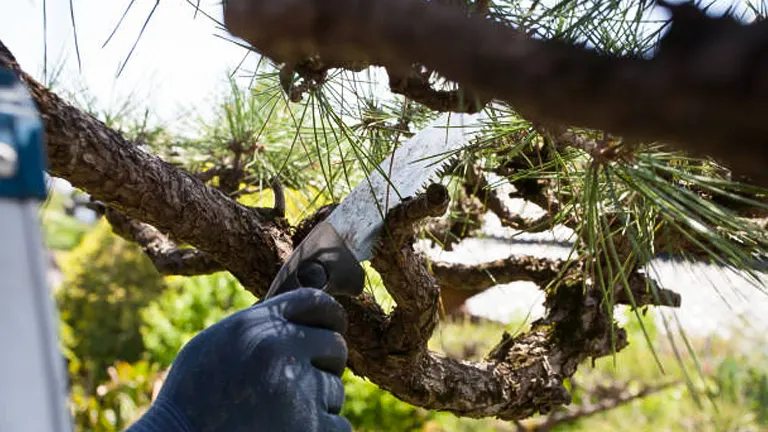
The timing of pruning is critical for the health and growth of pine trees. Pruning at the wrong time can stress the tree, making it more susceptible to disease and pest infestation. Moreover, improper timing can lead to sap loss, particularly in species that produce copious amounts of sap when cut. The goal is to prune at a time that minimizes stress to the tree while allowing for the best healing and growth conditions.
- Biological and Ecological Considerations: The lifecycle of a pine tree includes periods of active growth, dormancy, and recovery. Pruning during the dormancy period in late winter to early spring is generally recommended because it coincides with a time when the tree’s metabolic activities are at their lowest. This strategic timing reduces sap loss — a critical factor for trees like pines that are known for their sap production. Additionally, pruning wounds can heal more efficiently as the tree exits dormancy and enters its active growth phase, leveraging the natural surge in energy and resources.
- Impact on Disease and Pest Dynamics: The timing of pruning can influence a tree’s exposure to pathogens and pests. Many diseases and pests are more prevalent and active during warmer months, making the dormant season an optimal time for pruning to avoid attracting harmful agents to fresh cuts.
- A Closer Look at Sap Flow and Wound Closure Rates: The sap flow rates and wound closure capabilities of pine trees vary throughout the year, influenced by environmental conditions and the tree’s physiological state. Pruning when sap flow is minimized helps prevent excessive sap loss, which can attract pests and lead to disease. Similarly, the tree’s ability to close wounds and initiate the healing process is enhanced when pruning aligns with the onset of the growth season.
Optimizing Pine Pruning for Health and Growth
The seemingly simple act of pruning hides a complex interplay between plant physiology, environmental factors, and optimal growth windows. Understanding these dynamics is crucial for maximizing the benefits of pruning while minimizing stress on your pine tree.
Stress on the Cellular Level:
Pruning triggers a cascade of physiological responses within the tree. Damaged tissues activate defense mechanisms, diverting resources away from growth and potentially compromising immunity. Studies have shown that inappropriate timing can exacerbate this stress response, leading to:
- Increased production of stress hormones: These hormones inhibit essential processes like photosynthesis and nutrient uptake, impacting overall health.
- Elevated susceptibility to pathogens: Stressed trees are more vulnerable to attacks by diseases and pests, jeopardizing their long-term survival.
- Disrupted energy allocation: Improper timing can interfere with the natural cycle of resource distribution within the tree, hindering growth and development.
The Sap Flow Factor:
For some pine species, understanding sap flow dynamics is crucial for successful pruning. During periods of peak sap flow, which typically occurs in late spring and early summer, excessive bleeding can occur from pruning wounds. This loss of sap, rich in nutrients and water, weakens the tree and leaves it vulnerable to infection.
Maximizing Healing and Growth:
So, when is the magic timing for pine pruning? The answer lies in aligning your actions with the tree’s natural physiology:
- Dormancy is King: The late winter to early spring window, when trees are dormant, is widely considered the optimal time for pruning. During this period, sap flow is minimal, stress response is reduced, and wounds heal efficiently before the growing season begins.
- Species Specificity: While the dormancy window is a good general rule, some species have unique sensitivities. Research your specific pine type to determine any deviations from this timing.
- Climate Considerations: In warmer climates with milder winters, the dormancy window might shift slightly later. Adjusting your pruning schedule based on local conditions ensures you stay within the optimal timeframe.
Impact of Pruning Timing on Pine Trees
| Pruning Period | Sap Flow Rate | Wound Closure Speed | Risk of Pest/Disease Infestation |
|---|---|---|---|
| Late Winter – Early Spring | Low | High | Low |
| Late Spring – Summer | High | Moderate | High |
| Fall | Moderate | Low | Moderate |
| Winter (Mid to Late) | Very Low | Very Low | Low |
Note: The above table simplifies complex biological processes and can vary based on species, geographic location, and specific environmental conditions.
Best Time for Pruning Pine Trees
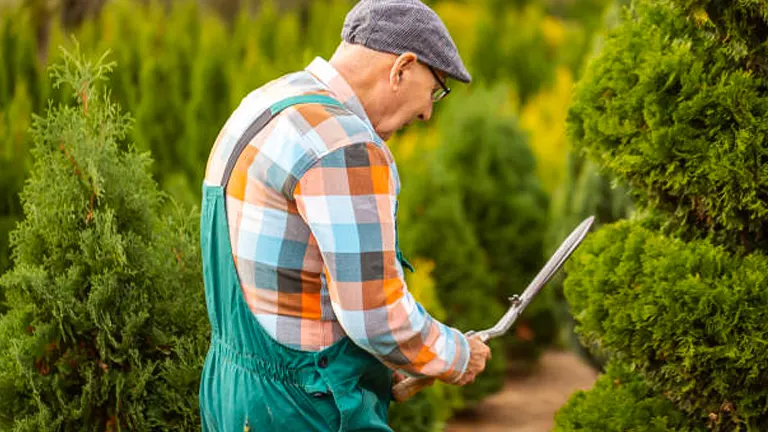
During late winter and early spring, pines enter a state of physiological hibernation. Sap flow slows down, minimizing bleeding risk and ensuring efficient wound healing. Pruning during this dormancy window creates minimal stress, allowing the tree to focus its energy on healing before the active growth surge in spring. Think of it as giving your pine a head start to recover and thrive.
Late Winter to Early Spring: A Closer Look
- Dormancy and Pre-Growth Phase: Targeting the tail end of the dormant season allows for minimal disruption to the tree’s natural cycles. During dormancy, trees conserve energy in their roots, which they then use to support new growth in spring. Pruning just before this growth spurt ensures that the tree can immediately begin healing, reducing the risk of disease or pest infestation.
- Sap Flow Considerations: For species known for their sap, such as certain pines, the timing is crucial to avoid excessive sap loss. While sap loss is less of an issue in the colder months, early spring pruning, done just before the sap rises, can prevent the attraction of pests that are drawn to the sap.
Adjusting for Climate and Geography: Different regions experience the transition from winter to spring at varying times, which can affect the ideal pruning window for pine trees in those areas.
- Northern Regions: In areas with longer winters, waiting until late March or early April is advisable to avoid damage from late frosts.
- Southern and Warmer Climates: Here, February to early March might be more suitable, as warmer temperatures arrive earlier and trees exit dormancy sooner.
- Coastal Areas: These locations may require specific timing due to unique microclimates, including considerations for humidity and local pest activity.
Species-Specific Guidance: Not all pine trees respond to pruning in the same way. Variations among species in terms of growth rate, typical sap flow patterns, and susceptibility to pests and diseases mean that the general advice must be tailored to fit specific types of pine trees.
Practical Tips for Tree Owners:
- Young Trees: Early in their life, structural pruning helps develop a strong form and framework, which can be best achieved by pruning in the earlier part of the recommended window.
- Mature Trees: For older trees, the focus shifts to maintenance and health, with safety pruning to remove dead or dangerous branches being a priority that can often be addressed at any time of year but ideally still within the late winter to early spring window.
Regional Variations in Pruning Timing for Pine Trees
| Region | Typical Pruning Window | Specific Considerations |
|---|---|---|
| Northern | March to April | Wait for the risk of deep frost to pass |
| Temperate | Late February to March | Align with local seasonal cues for dormancy end |
| Southern | February to early March | Adjust for earlier spring growth onset |
| Coastal | Depends on microclimate | Consider local humidity and pest activity levels |
Adapting to Tree’s Lifecycle: Younger trees may benefit from slightly earlier pruning within the recommended window to guide their structural development and ensure a strong framework for future growth. Mature trees, on the other hand, often require less frequent pruning, focused more on health maintenance and safety rather than shaping.
A Comprehensive Approach to Pruning: Understanding the best time for pruning pine trees involves more than just marking a date on the calendar. It requires a holistic view that considers the tree’s physiological needs, environmental factors, and long-term health and development. By aligning pruning practices with these principles, tree owners and caretakers can ensure their pines remain vibrant and thriving components of the landscape.
How to Prune Pine Trees
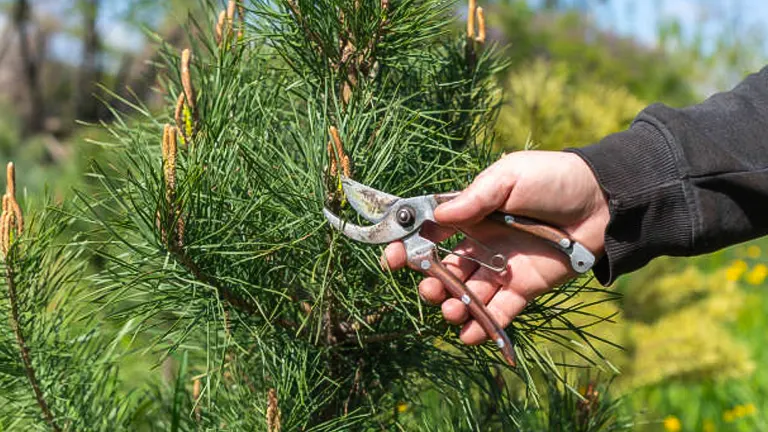
Safety Measures and Tools Required
- Hand Pruners: Ideal for small branches up to ½ inch in diameter.
- Loppers: Best for medium branches, offering more leverage for cuts up to 1 ½ inches in diameter.
- Pruning Saws: Necessary for larger branches, with various sizes available depending on the branch thickness.
- Pole Pruners and Saws: Allow for the safe pruning of high branches from the ground, though they require skill to use effectively.
- Safety Harness: Recommended when using ladders or climbing for higher branches, ensuring stability and safety.
Step-By-Step Guides
Step 1: Understand Your Tree
- Different pine species may have varying pruning needs. Identify your pine tree to tailor your approach.
- Check for signs of disease, pest infestation, or damage. This will help prioritize which branches need to be removed.
Step 2: Gather the Right Tools
- Safety glasses, gloves, and sturdy footwear.
- Hand pruners for small branches, loppers for branches up to 1.5 inches in diameter, and a pruning saw for larger branches. A pole saw or pruner can be used for high branches.
Step 3: Time Your Pruning
- Late winter to early spring, before the sap starts running and new growth begins.
- Damaged or diseased branches can be removed any time of the year as needed.
Step 4: Plan Your Cuts
- Determine whether you’re pruning for health (removing dead, diseased, or damaged branches), safety (removing hazardous branches), or aesthetics (shaping the tree).
- Identify which branches need to be removed according to your objective.
Step 5: Pruning Technique
- Start by removing these. Make cuts outside the branch collar (the swollen area of bark where the branch meets the trunk) to promote healing.
- When shaping or reducing size, cut back to a lateral branch or bud that faces the direction you want the new growth to follow.
- To improve air circulation and light penetration, selectively remove branches, ensuring not to over-thin the tree.
Step 6: Make Clean Cuts
- Slightly angled cuts help prevent water accumulation on the cut surface, reducing disease risk.
- Use sharp tools to make clean cuts that heal more efficiently, reducing stress on the tree.
Step 7: Clean Up
- Collect and dispose of all pruned branches and foliage to prevent pests and diseases.
- Clean and disinfect your pruning tools after use to prevent the spread of disease between trees.
Step 8: Post-Pruning Care
- Ensure the tree is adequately watered, especially during dry periods, to help it recover from the stress of pruning.
- Apply a layer of mulch around the base of the tree (without touching the trunk) to help retain soil moisture and regulate temperature.
Step 9: Monitor Tree Health
- In the following months, watch for signs of new growth and any indicators of disease or distress.
- Conduct a yearly evaluation of your tree’s health and structure to determine if additional pruning is needed.
Additional Tips
- Never remove more than 25% of a tree’s crown in a single year.
- Aim to maintain the tree’s natural form, avoiding excessive shaping that can stress the tree.
Aftercare Following Pruning
Proper aftercare is crucial for helping pine trees recover and thrive after pruning.
Hydration is Key:
- Water Wisely: Especially during dry periods, provide your pine with deep, infrequent watering. This encourages roots to grow deeper, seeking out sustainable moisture sources. Avoid shallow watering, which only benefits surface roots and makes the tree more susceptible to drought stress.
- Gauge Your Watering: Monitor soil moisture, adjusting the frequency and amount based on rainfall and weather conditions. Sandy soils dry out faster, requiring more frequent irrigation than clay-heavy soils.
Mulching:
- Embrace the Benefits: Spread a 2-3 inch layer of organic mulch around the base of your pine, excluding the trunk area. This helps retain soil moisture, regulate temperature, and suppress weed growth. Think of it as a natural blanket, protecting and nourishing the root system.
- Choose Wisely: Opt for organic mulches like shredded bark, wood chips, or pine needles. Avoid inorganic materials like plastic or landscape fabric, which can impede water penetration and air circulation.
Monitor the Progress:
- Monitor Closely: Regularly inspect the pruning sites for signs of disease or pest infestation. Early detection is crucial for preventing problems from escalating and causing harm to your pine.
- Know the Signs: Look for discoloration, wilting, unusual growths, or insect activity around the cuts. If you notice anything suspicious, consult a certified arborist for prompt diagnosis and treatment.
Remember:
- Be patient! Depending on the size and extent of pruning, complete recovery can take several months.
- When unsure, err on the side of caution with post-pruning care. Overwatering or excessive fertilization can be detrimental to the tree’s health.
- If you have concerns or require tailored advice, don’t hesitate to consult a professional arborist.
Conclusion
Pruning pine trees at the correct time and in the proper manner is vital for their health, safety, and aesthetic appeal. Late winter to early spring, before the onset of new growth, is the ideal time for this task. By following the recommended practices for pruning and aftercare, gardeners and homeowners can ensure their pine trees remain vibrant and thriving components of their landscapes.
FAQs
- Why is late winter to early spring considered the best time to prune pine trees?
This period minimizes stress on the trees as they are still dormant but about to enter their growth phase. It allows for rapid healing of cuts with the onset of growth, reducing disease and pest risks. - Can I prune my pine tree in the summer?
Major pruning is not recommended due to increased sap flow and pest attraction. However, light pruning, such as removing dead branches, can be done cautiously. - Is there ever a time when I should immediately prune a pine tree, regardless of the season?
Yes, immediate pruning is necessary for damaged, diseased, or dangerous limbs that pose a risk to safety or property, irrespective of the season. - What happens if I prune my pine tree too early in the winter?
Early winter pruning may expose cuts to extreme cold, risking frost damage. It’s advisable to wait until the coldest part of winter has passed. - Why is fall considered a bad time for pruning pine trees?
Pruning in fall can leave cuts vulnerable to winter conditions without enough time to heal, and many pests and diseases are still active, increasing infection risks. - How does pruning a pine tree in the recommended window benefit its health?Pruning during late winter to early spring supports the tree’s natural healing and growth cycles, promotes healthy development, and minimizes exposure to pests and diseases.
- What should I do if I missed the recommended pruning window?
If pruning for maintenance, it’s best to wait until the next recommended window. If pruning is necessary for safety or health reasons (like removing diseased branches), proceed with caution at any time. - Does the age of the pine tree affect the best time to prune?
The timing generally remains the same across all ages, but the purpose and extent of pruning may vary. Younger trees might be pruned for training and shaping, while older trees are often pruned for health and safety.
For a happy, healthy pine, prune late winter to early spring. Think dormancy, minimal sap flow, and faster healing – the perfect recipe for a successful pruning session!

Benjamin Brooks
Forestry AuthorGreetings! I'm Benjamin Brooks, and my journey over the past 15 years has revolved around the fascinating realms of content creation, expertise in snow clearing, and the intricate world of lumberjacking and landscaping. What began as a simple curiosity about the natural world and heavy machinery has evolved into a passionate profession where my love for crafting words intertwines seamlessly with my lumberjacking and garden skills.













Leave your comment